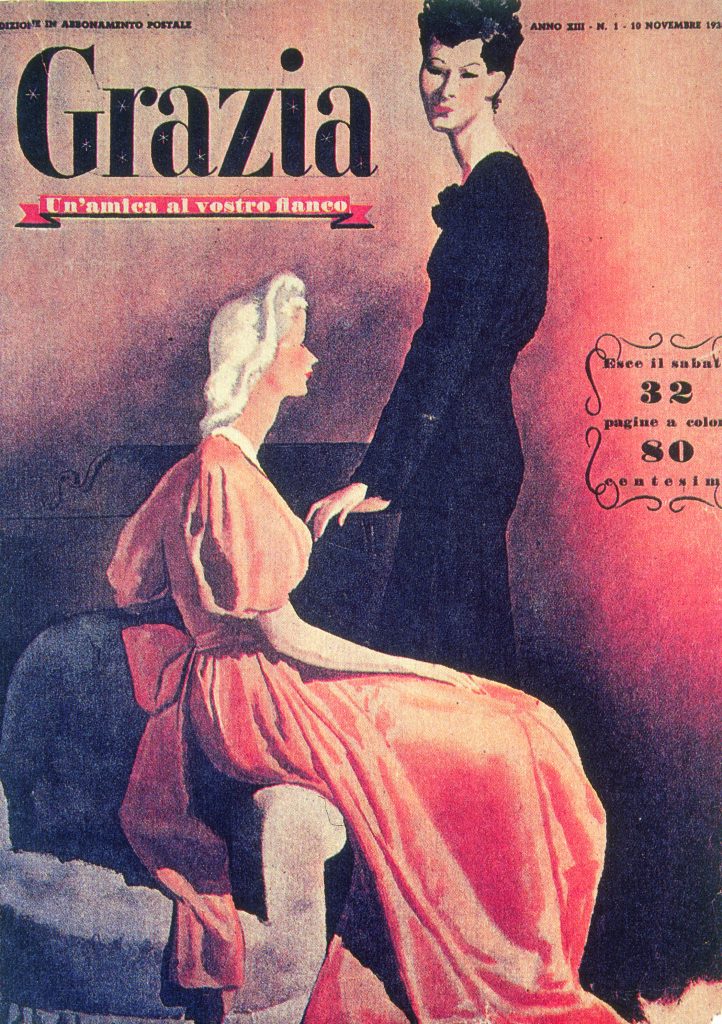
Made in Italy. For decades, these three words have come to embody a multitude of admirable qualities: artisanship; creativity; sophistication; wit. For almost as long, these same words have been used to describe the magazine GRAZIA, first launched in Italy in November 1938.

Born out of the dynamism of the 1930s and on the eve of World War II, GRAZIA has always been necessarily of the moment. Not just a sophisticated fashion and beauty magazine, GRAZIA is a boldly empowered cultural touchstone, engaging in the most relevant conversations of the day while offering incisive critique, powerful inspiration and unwavering support for women leading the way towards change. For example, in 1968, GRAZIA made headlines—literally—with an interview with Italian author Camilla Cederna. Credited with introducing investigative journalism to the Italian news media, she was unsparing in her takedown of the scandal‑ridden Italian government in her books and on the pages of GRAZIA.




Throughout the decades that followed, GRAZIA continued to lead the way in championing progressive causes—especially those impacting the lives of women around the world. In the 1970s, the magazine gave its support to women’s abortion rights—a bold stance in its largely Catholic home nation. Feminism was proudly celebrated in many issues and regular political cartoons offered a witty take on the topics mattering most to readers.
GRAZIA has always been a cultural leader, taking decisive steps towards evolution and transformation years before others did
GRAZIA has always been a cultural leader, taking decisive steps towards evolution and transformation years before others did. In 1988, for example, it made the surprising and agenda‑setting move to officially go fur‑free within its pages. Ten years later, more than 250,000 GRAZIA readers endorsed the magazine’s “A Flower for Kabul” campaign protesting against human rights violations against women in Afghanistan. The issue was brought to the United Nations in Geneva by Italian politician and then minister of foreign affairs Emma Bonino and GRAZIA’s editor at the time, Carla Vanni. (How heartbreaking that nearly 30 years later, yet another campaign could again be called for soon.)




While championing and protecting the rights and voices of women around the world, GRAZIA has also defined itself by celebrating the singularity, beauty and style of individual women everywhere. In 1966, for instance, the magazine celebrated reaching 100,000 subscribers by delivering a bouquet of flowers to 1,000 women worldwide. Then, in 1989, GRAZIA honoured former prime minister of the United Kingdom Margaret Thatcher’s 10‑year career with an exclusive portrait series of the woman at the peak of her power. International icons such as Isabella Rossellini and Eva Herzigová also gained worldwide acclaim through their features in GRAZIA.




The cultural influence of the magazine has always known no borders. Made in Italy but a global citizen, GRAZIA was launched internationally in 2004 in Bulgaria. Twenty‑three international editions followed, including editions in the U.K. (2005), the Balkans (2006), the Netherlands (2007), Russia (2007), India (2008), China (2009), France (2009), the U.S. (2020) and, of course, here in Singapore as well as Malaysia (2023).
While championing and protecting the rights and voices of women around the world, GRAZIA has also defined itself by celebrating the singularity, beauty and style of individual women everywhere
Through it all, there has been a wealth of truly breathtaking fashion (and, naturally, some sartorial choices that now appear somewhat cringeworthy). Intimately linked to Italian designers—such as one‑time guest editor Giorgio Armani and perennial favourite Gianni Versace, a close friend of GRAZIA Italy’s then-editor Carla Vanni—GRAZIA has also given a share of the spotlight to emerging designers who would later become iconic—think André Courrèges, whose jumpsuits brought mass appeal to the high‑fashion market in the 1970s. In the 1980s, Krizia’s new and dynamic silhouettes were first highlighted and celebrated by GRAZIA. Even the return to minimalism in the ’90s was predicted and impeccably chronicled by the magazine.

Where to next? The Singapore team is proud to pick up the mantle that has been so expertly woven by the generations of GRAZIA teams that came before it and look forward to adding its own threads to the tapestry that is the brand’s history. Effortlessly chic and boldly empowered, GRAZIA is a cultural touchstone that inspires, educates, and celebrates the individuality, beauty and style of women everywhere. As a global brand and a publication here in Singapore, GRAZIA is just getting started.
